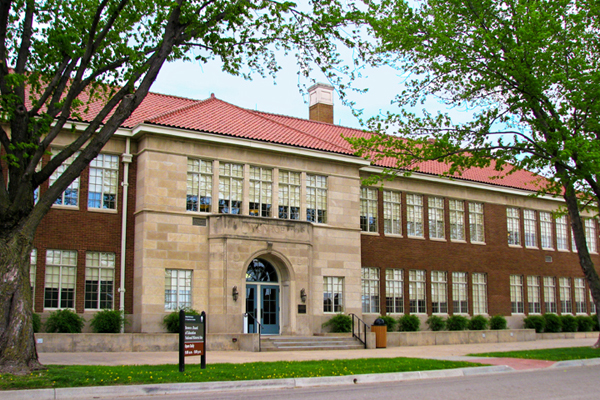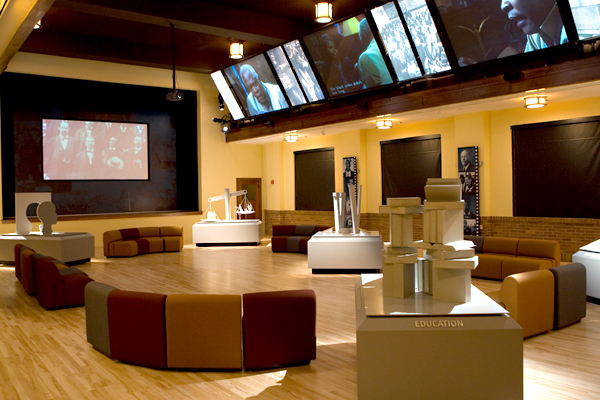Address: 1515 SE Monroe Street, Topeka, KS 66612
Phone: 785.354.4273
Website: www.nps.gov/brvb/index.htm
 |
| Brown vs. Board of Education National Historic Site, Topeka. Photo courtesy Brown v. Board of Education NHS |
THE HISTORICAL NATURE OF THE BUILDING
Brown v. Board of Education National Historic Site is located in the 1926 Monroe Elementary School, one of four African American segregated schools representing the Topeka case decided by the U.S. Supreme Court in 1954 which ended racial segregation in public schools.
 |
| The tour starts here in the renovated gymnasium with a provocative video which sets the stage for the remainder of the visit to the museum. Photo courtesy Brown v. Board of Education NHS |
The U.S. Supreme Court decision in Oliver L. Brown et al v. Board of Education, Topeka Kansas (1954) is one of the most pivotal opinions ever rendered by that body. This landmark decision highlights the U.S. Supreme Court's role in affecting changes in national and social policy. Often when people think of the case, they remember a little girl whose parents sued so that she could attend an all-white school in her neighborhood. In reality, the story of Brown v. Board is far more complex. In December, 1952, the U.S. Supreme Court had on its docket cases from Kansas, Delaware, the District of Columbia, South Carolina, and Virginia, all of which challenged the constitutionality of racial segregation in public schools. The U.S. Supreme Court had consolidated these five cases under one name, Oliver Brown et al. v. the Board of Education of Topeka. One of the justices later explained that the U.S. Supreme Court felt it was better to have representative cases from different parts of the country. This collection of cases was the culmination of years of legal groundwork laid by the National Association for the Advancement of Colored People (NAACP) in its work to end segregation. None of the cases would have been possible without individuals who were courageous enough to take a stand against the segregated system.
 |
| There are interactive exhibits throughout the museum for visitors of all ages. Photo courtesy Brown v. Board of Education NHS |
Special public programs and rotating temporary exhibits provide interpretation of civil rights, segregation, and public education throughout the year.
Open daily 9 a.m.-5 p.m., except Thanksgiving, Christmas and New Year's Day.
Source: Tamra Schied's nomination